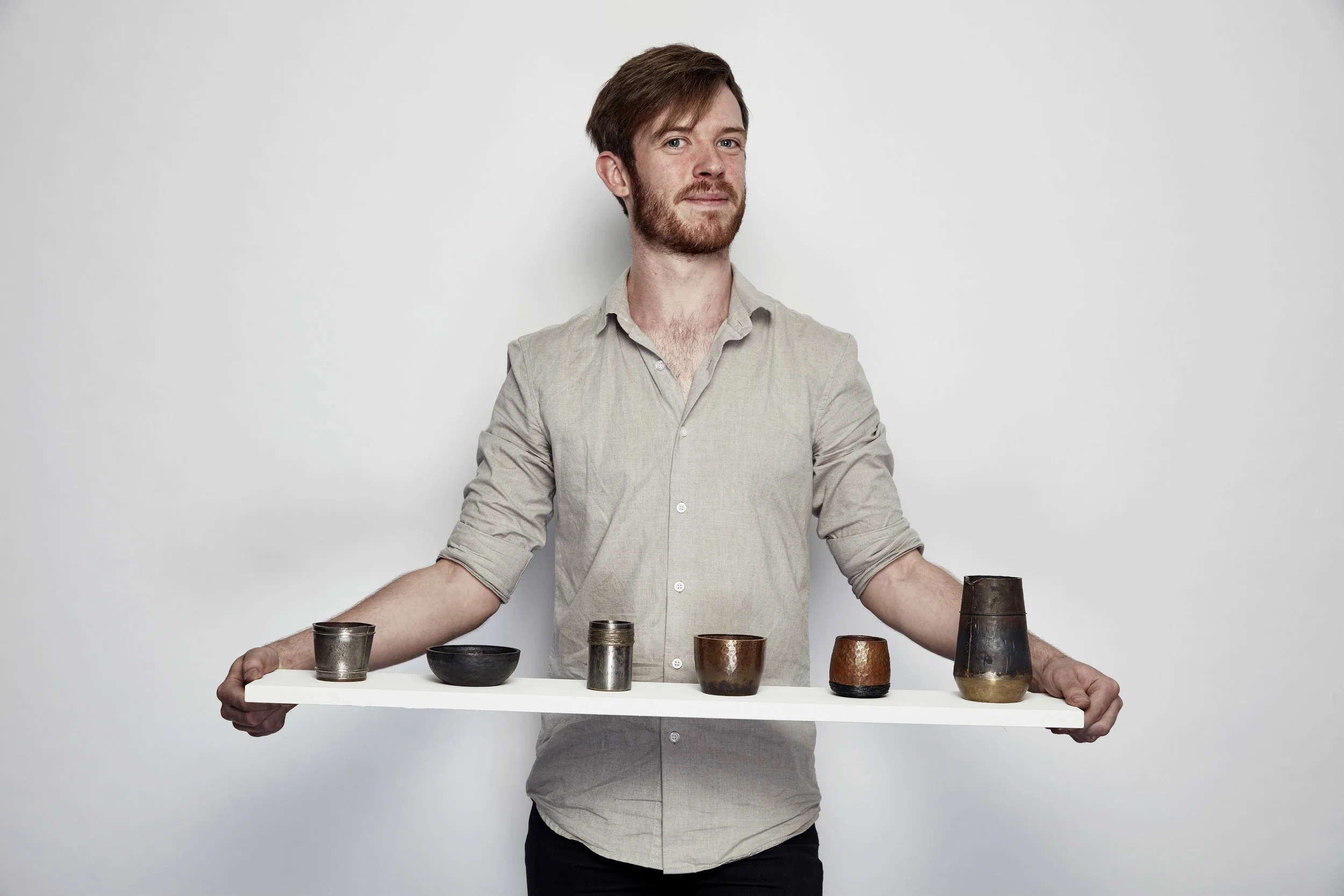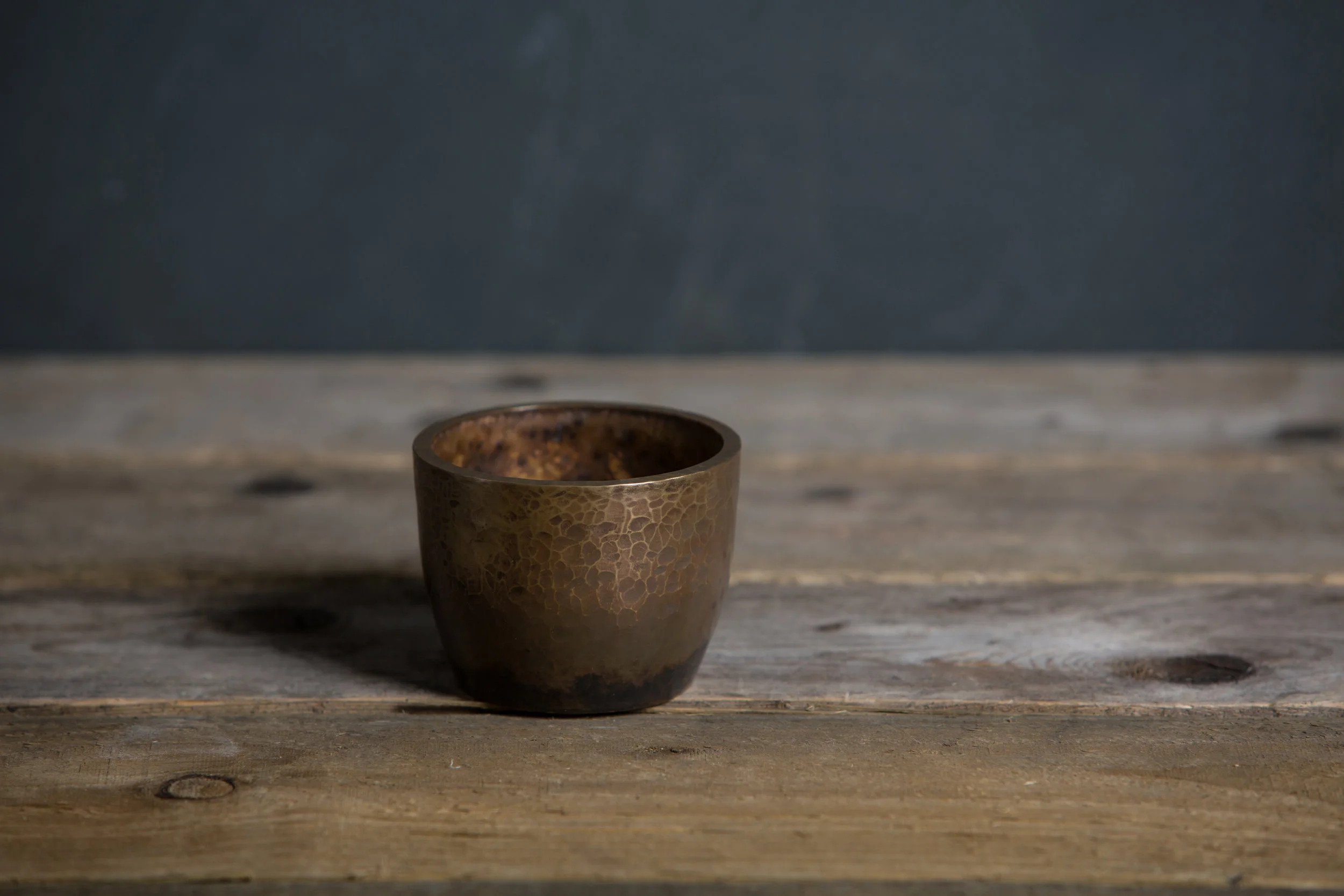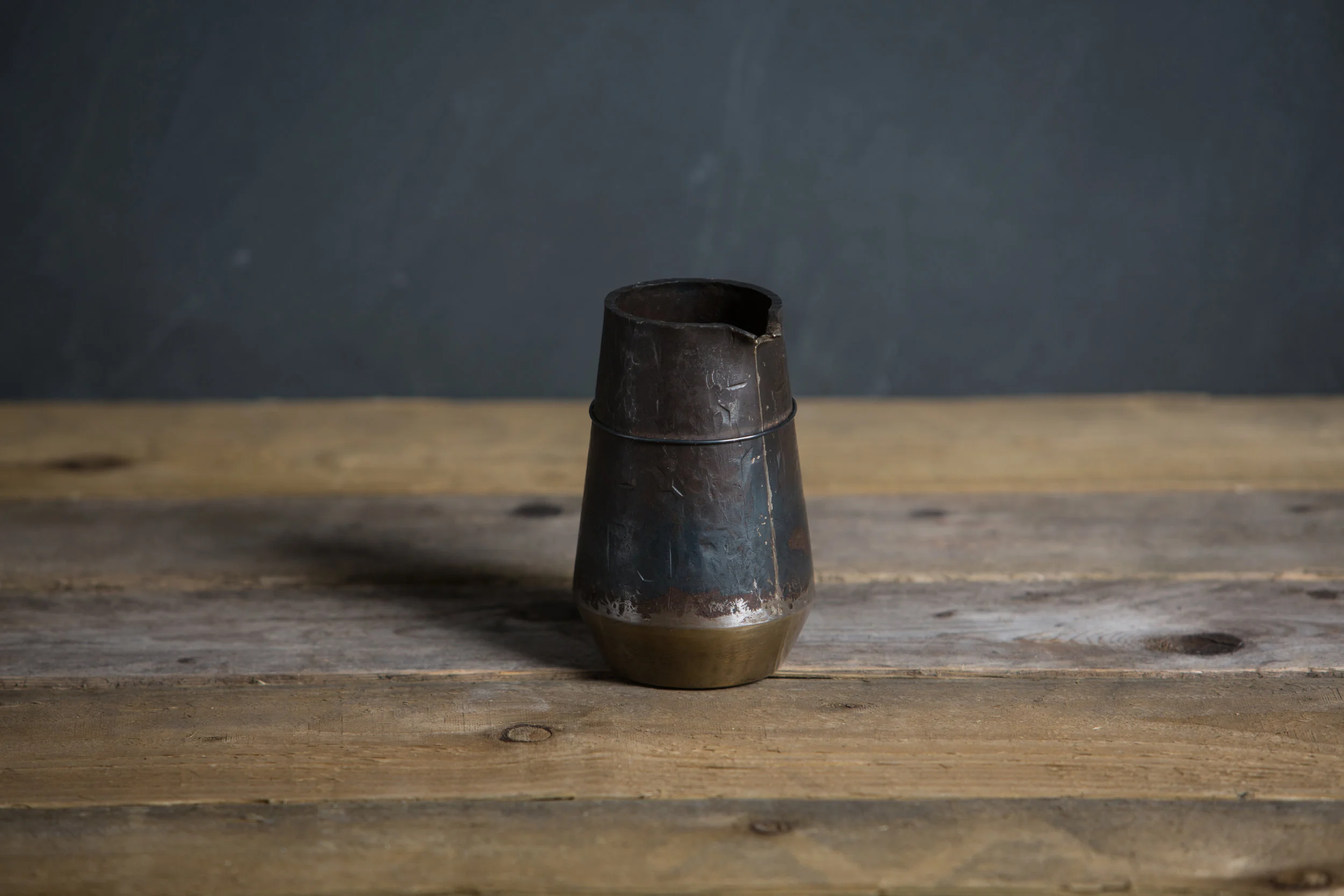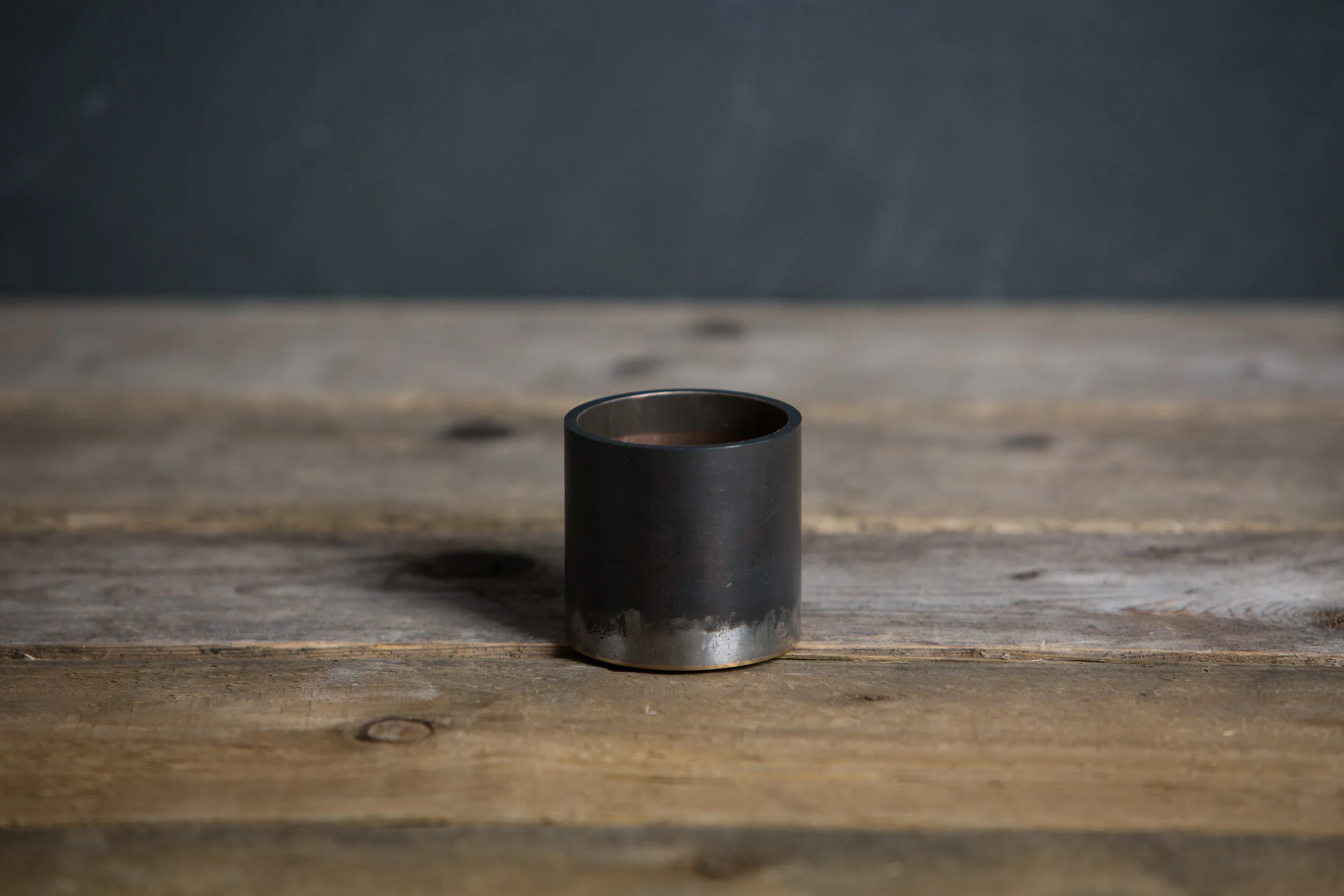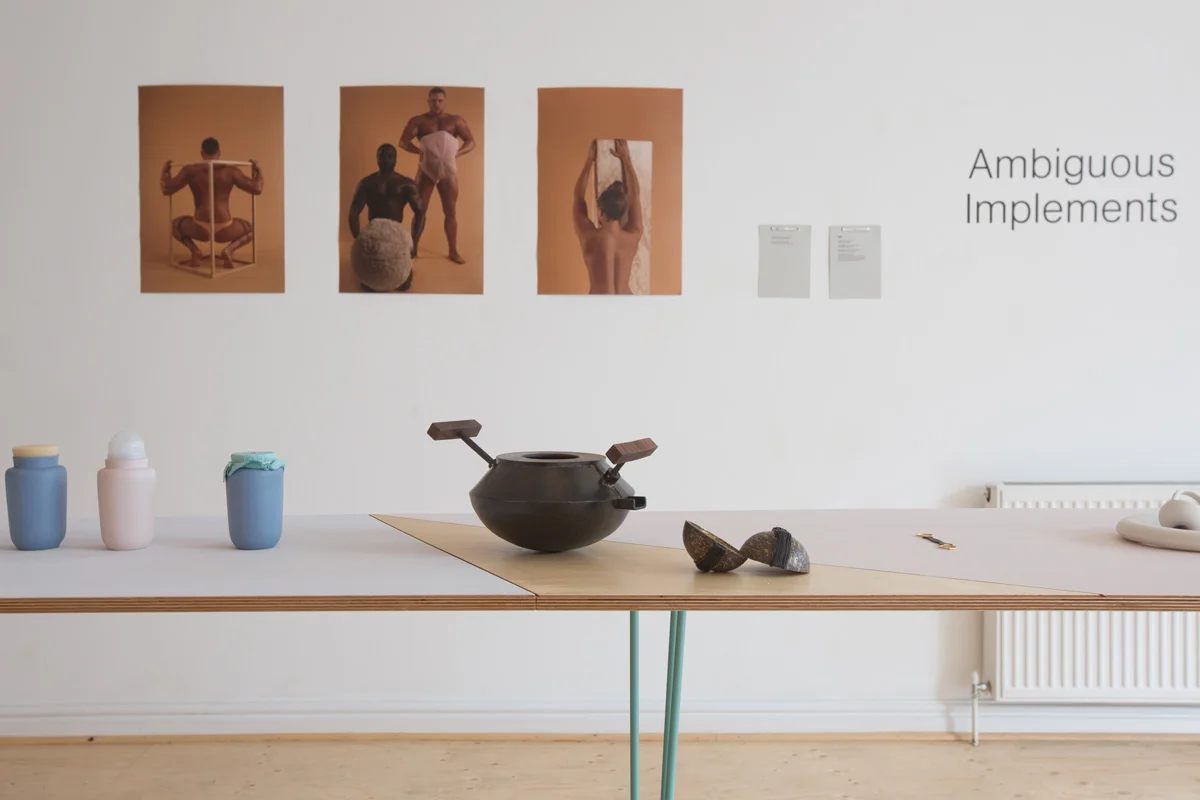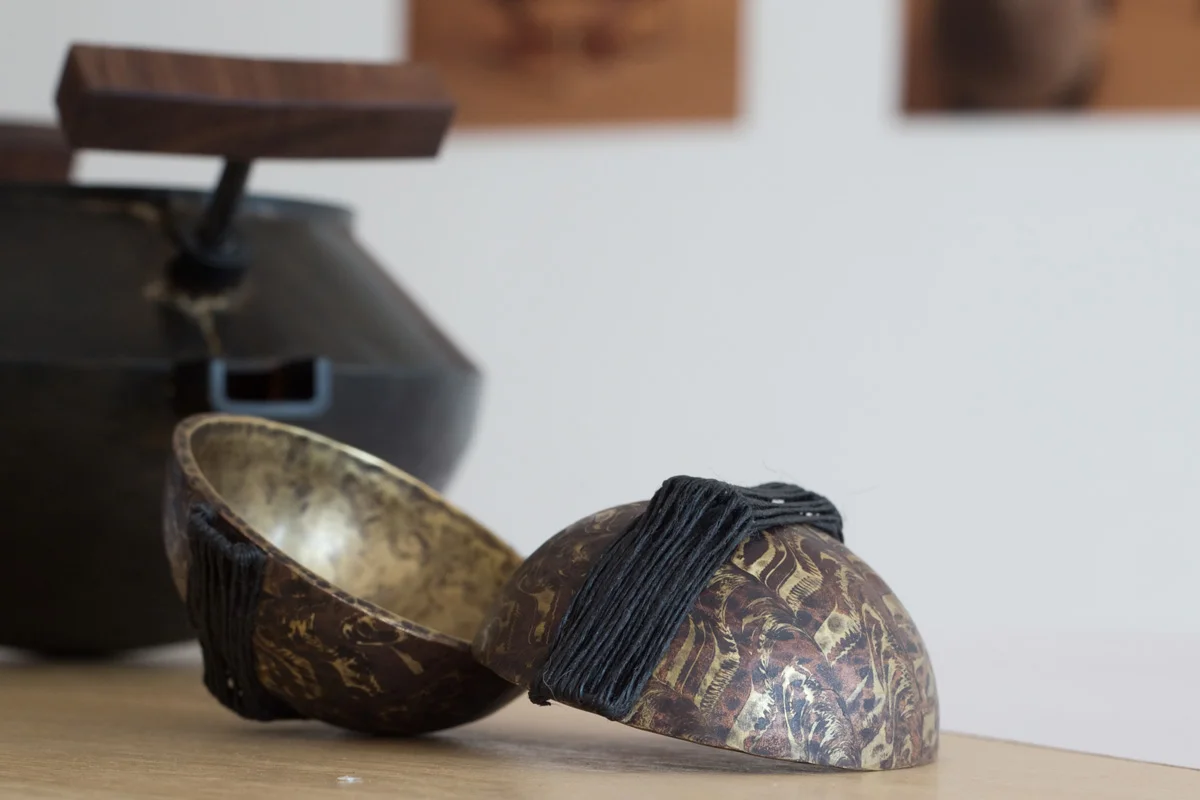Conversations with Makers is a regular series on the blog.
As part of my work I regularly meet makers to discuss their creative practices and I always find the conversations insightful and inspiring. I thought maybe you would too. The act of articulating your work, to another person, regularly, is something we often overlook but which is vital if we are to remain critically engaged with what we do. Discussing your work, but also hearing other people talk about their work, helps the thinking behind the making no end.
So, once a month, I will share a conversation I have had with a maker. Next up – Rob Anderson.
I recently worked with Rob as part of Ambiguous Implements – a cross discipline exhibition that presents a collection of contemporary works that playfully reconsider the familiar objects of our day to day domestic life. I chaired a discussion at the Ambiguous Implements symposium featuring emerging makers, where we discussed strategies for developing and sustaining your career. I was suprised by how honest Rob is about his making practice, and the material-led methodology for making that he has evolved. I wanted to find out more about this process so caught up with him at Sheffield Institute of Arts where he is doing an MA in Jewellery and Metalwork.
MV When did you discover that this intuitive approach was how you wanted to work? Because when you are taught all the basic skills at BA, you’re taught…
RA …the complete opposite, yeah. It might have been through getting really dejected about being able to creatively use finished pieces. When I started the BA course and any creative project I have I’ve always leaned toward it being something very specific and then try and act upon that. It had always felt like hard work and a bit contrived. And I’m not really sure how it started. It happened when I started doing a project on brutalist architecture. I think I initially chose it because it was the clean lines, very plain but had a function or one feature that stood out. And whilst making maquettes in metal, just the process that I put it through started degrading the steel that I was using. Which then sort of made me look more broadly at the architecture and how I probably didn’t notice that on the perfect forms, the actual concrete details on the surface are really irregular. I accidently ended up mimicking that by going through the processes. And it just felt great; it was the first time that I didn’t have to fight to get something to work. It felt like a million miles ahead of all the other work I’d done, where I felt like everything was really controlled. Things could never live up to my expectations, but this way it grew into my expectations, almost…
… so not just the process of working, also your attitude to the working, changed as well?
Yeah definitely. As opposed to being really rigid in what I expected from it, sort of letting that go was really great. That’s not to say that the work I make now I’m certain that it will work out in the end – cos I’m possibly the most panicky and nervous maker! I’m full of uncertainty. As opposed to it being a paralysing thing for myself, it allows me to have that little bit of faith that I can work with the material, and takes the pressure off me a little bit, which I find helps me creatively.
I guess otherwise you’re the designer, the maker and the finisher. Every step is you having to make that work. But if you’re allowing certain things to happen, being a bit more free with what’s going on with the making, then the end point – you just have to decide when that is, rather than saying ‘that’s the end, I’ve got to get there’
Yeah, as opposed to looking at a piece and saying ‘it’s not quite there’ it’s the opposite of that, it’s almost like you’re co-designing the piece. I know that sounds overly romantic about it, but it is like you’re responding to the material and it’s responding to you.
So how did things develop from there, because I’m not sure now anyone would say your work looks like brutalist architecture. What’s the journey from that point to when you knew ‘ah, I’ve got something here’ to where you are now?
From that incredibly relaxing accident I don’t know whether it allowed me to free up and just look at my interests more broadly, rather than looking at interests that would build my persona as a designer, I just relaxed and thought ‘I really like this, this and this.’ And it allowed other interests to come through. I’ve always had an appreciation for Japanese aesthetics, not only that but their attitudes toward craft and objects and allowing myself to appreciate that. Then moved on to looking at Japanese ceramics at a similar scale to what I’d be working on…
But the different material?
Still keeping true to what I do. I can’t work in ceramics, like throwing it’s too quick, I can’t make my decisions that quickly. With metal there’s no pressure of drying out, I can leave it for a couple of years and come back to it!
So there’s a sense of you not being rushed, as well. Part of the method is not just the making, it’s the way you think about it and knowing how you work, and understanding yourself as well. I wonder if some makers don’t always do that, they think a lot about their making but they don’t’ think about how they work, and what suits them. Like you said about finding your interests, letting those come through naturally rather than forcing it.
Especially now there’s a lot of expectation with what you should look like as a designer. You surround yourself with people you’re inspired by, read about them, and they come across as incredibly professional in what they show you. For me, I could never be like that, it was quite paralysing. I thought I’m not working like that, so how can I turn out anything that’s that good? My craft and my attitudes towards materials, it’s really just a way of me looking for ages how to find a way that allows me to work, actually fits my personality.
This method of working – of allowing things to happen – in reality what does that mean? Does that mean that you start with a design?
Yeah
There is a starting point?
Yeah, to some extent you’ve always got to commit to something, you can always change it or completely modify it, but even by choosing a material, like a copper blank, you’ve chosen it’s gauge, it’s weight and diameter and it can only ever be a certain size. I’ll generally start with something, have a vague idea of maybe a form I want to chase or something where I have an idea for a surface finish, but I’m not sure how it’s going to pan out. By having that, it allows me to not worry about the early stages when it’s still so shiny or it’s not taking any oxide, it looks so stagnant. But again, aiming for a loose goal allows you to give it enough time to not become anxious about it. I’m not an anxious person! I don’t worry to the point where it stops me functioning, but I am anxious in the way that I know how things can stop my creative processes. It’s hard to put into words.
And I’m guessing these are possibly quite small things, things that can crop up during the process?
Yes, even things like bad moods can creep in there. But by having that loose thing of going for quite a few hours before you even have to think about the finish, allows me to become more concentrated on it, less distracted by insecurities.
So, when you’ve got the form you want, is that when ideas come into play about the finish or treatment, or is it happening all the way along?
At any point there could be something that pops up – I’ve left some acid alongside the pickling solution, left it there for too long and it’s left a tide mark on it – or things like that can pop up at the end or quite early on. It could be using a blank and you’ll know within the first few courses of raising it that there’s a fault in the metal and it’s going to delaminate or crumple or something like that. I’m always on the look-out for it, paying attention to it.
I know this is a term that gets used a lot, but it does sound quite mindful- you are paying attention to what is happening, noticing. The pieces are giving you clues about what they could be or become and what might happen. You are aware of that. Those are the things that are informing the choices that you make…
You’ve picked up the mindful thing without me mentioning it. Someone else noticed that about my work and I suppose I do work in a way that helps me be in the moment. The place where I differentiate from it is that I don’t do it to be able to gain the benefits from mindfulness as such. Some people practice it to feel better, I never do it to feel better. It’s just trying to help the flow for me, and that does mean that I’m more present when I’m doing things.
Maybe that’s a better word: ‘presence’. The associations people often have with mindfulness is to do with wellbeing, and the mental health benefits. But it’s just a process – you can apply mindfulness to anything you’re doing – you could be mindfully cooking or swimming. What I’m saying is that it sounds like when you are making it’s in a mindful way as opposed to those processes where you can be on autopilot. You’re not just so focused on raising a form that you don’t notice that the material is telling you something.
The way it feels is you start on something and you’re going to spend some time with it. You go on a walk somewhere, you’re not sure where, but you know you’ll pay attention to the things that pop up.
These things that pop up, are they things other people would ignore them or try to make them go away, to keep things perfect. What do you do – do you enhance it, or let it be?
It’s completely dependent on the material and the mood I’m in that day! In that sometimes there are detrimental things that can pop up, you can splash some acid on a piece and it will take all the oxide off that you’ve been carefully building up for ages, and it’s like ‘right, that’s less helpful!’ so it’s not allowing everything through, I guess!
You’re still being selective, making design choices, which ones you want to allow to happen.
Yeah, but there’s no rules. Maybe as the form is growing, an element that’s happening is enhancing it. Sometimes I’ll help that bit grow, I’ll try and exaggerate it. But at the same time I might try to, if it’s something that’s quite overt, I might try to subdue it on the way, so it’s still there but not so much. It’s mostly responding to my mood on the day…
…and to the materials. There are quite a lot of metalsmiths who might have a particular metal they enjoy working with, but you use quite a few different metals. Is that to do with an aesthetic choice or is it how you’re feeling at the time, because they’re quite different to work with, aren’t they? For example, when we met at New Designers One Year On last summer you’d been raising steel?
Yeah!
Which doesn’t sound like a relaxing pastime!
(laughs) No, it’s not an easy thing to do!
I’m not sure. I don’t think I choose a metal because I know what finish it will have. Maybe it is just that I have a blank cut there and I’ve not done anything with it yet. Maybe that’s part of it, that I never start a piece and go all the way through and finish it. Maybe the variation occurs because after working with copper all day, the next piece I start (because I’m not sure where the copper piece is going) I’ll start with steel. Maybe it’s to keep the variation. They all do have their own properties, they’re all more likely to do one thing than another. Sorry, I don’t know if that answers it.
No, it’s alright, I understand. You just mentioned something that I hadn’t realised which is that you’re not working on one piece from idea to finished object – you’re putting them down at various points, and leaving them?
Yeah, they can be left at the back of the bench for ages…
How many do you have on the go at one time?
Um, I would imagine if I had the time for it, I reckon I’d probably have about 4 or 5 pieces that aren’t complete. Maybe if I’ve got a deadline they’d all come together, maybe two will be finished and there will be a substantial amount of time and then another one or two.
And, what’s happening there? Is it a sense of needing the time to figure out what the work is going to be? But not in an active way, just letting it be there until you say ‘oh I know what to do with you today?’ Is it like that?
Yes it is. It’s a very passive process. By just being around them. I know it’s my own perception of it, and it’s completely made up, it’s not a scientific fact, but I feel like after a while you get to know them a little bit. Just contemplating, or glancing at them while you’re raising something else, it’s always there without me having to sit and definitely say ‘what am I going to do with you?’ It just allows me to mull things over, and then at some point it will feel like I’ve been around it for long enough that I know where I’m going.
Again, it’s that thing, of allowing, of trusting that you’ll get there, that things will happen. But it’s a lot more natural, and you’re not imposing your timetable on the work, you’re not there saying ‘this has to be finished’ and you’ll force it. It’s more like ‘hey, we’ll get there because we do’. It is a very different approach that seems to affect the way you think about your work in all its stages. You say ‘passive’ because it’s not as active, but you are still responding, you are still guiding, but you’re being a lot more open to letting things happen.
Yeah, it’s more… this sounds stupid… I feel like I’m almost growing a plant. As opposed to saying ‘oh I’m going to make this thing’ it’s more like, it’s going to have its own quirks, it won’t be like the next one. I grow a piece as opposed to make pieces. If that makes sense?
Yes, it does. I can understand why you might be hesitant saying that, because to someone who hasn’t heard you say anything up til that point, they might think it sounds a bit pretentious. But it isn’t because what you’re saying is that it’s not as controlling as someone who designs an object and executes it perfectly, like the engineers with their precision, and a technical drawing. And that would be considered a successful outcome of that thing they made. But what you’re saying is ‘I’ve got in mind a vessel, and it’s this material, and after that, who knows what the conditions are for growing that piece’. It is like growing – if you give it lots of water and light it will be big and vibrant, if you keep it in the dark it will be spindly. And it’s the same with you – you’re the conditions, aren’t you? How you’re feeling, what you’ve been up to is affecting what that piece does. You’re noticing what the piece is saying, and letting some things happen and maybe not letting others. It’s a bit more of a relationship, which is very interesting. For a lot of makers that might be really alien to them, because the processes they use might not allow them to respond to a material as much. At the weekend, I did a woodcarving course and carved a spoon. And although my skills are really basic, while I was doing it I could tell that you could feel how the grain was going and there was no point fighting it in certain places, that spoon was never going to go in that direction because the wood wouldn’t want it to.
But it wouldn’t be beyond your abilities to make it do that, you could…
Yes, I could. But it was so much easier and better in a way to let it go there and I ended up with something that didn’t really look like I thought it might do in my mind, but I was really happy with it because it felt right at that time. I guess it depends how makers feel about their relationship with the materials, as well as the processes, doesn’t it? It’s not just about designing and making, there’s this stuff you’re working with in your hands. It’s interesting to hear you talk about that.
Does this feel like a method that will now just be the way you always work?
I’m quite open to not having a way of working. I’m not thinking that I must always maintain this approach. But, it’s come from the space where after 25 years of trying to do the opposite, to force my will on everything, to have this work for me now, for it to be more fluid, it feels great. If something else starts happening, and it feels right, I’ll probably go with it. I’m not solely making my living out of this, it does mean that I don’t have that pressure of having to say I need to get pieces done. I’m not sure how that could coexist with my approach, if this was my sole discipline. But I’d probably get my fix elsewhere! I used to be a mechanic and I’ve still got old cars, make parts for them, so that’s the precision side maybe, the satisfaction of problem solving. But I’ve found that creatively whenever I try and impose those sorts of rules on myself I just find it absolutely stifling, I just cannot work.
But this is your strategy for dealing with that. And it works for you. Everyone should be striving for that, to find the way that makes sense for them.
By not putting myself in a position where the work has to be production, I don’t have to think about marketing and the profitability of it, other than covering my hours. I’m not trying to pay my rent or life costs from it. That in itself adds pressure – with a lot of metalwork or jewellery how much you can do with the piece depends on the time you can spend on it. I’ve removed myself from having that pressure which means that I try not to having anything hanging over me, I can’t work like that. I get how my practice works for me, but realise that all of my mentality towards it, it can’t be applied to other people’s craft, it’s just not viable. It physically doesn’t work in the real world. I’m happy with that. I have been tempted by thinking ‘can I make something a bit smaller just to get more work out?’. The temptation to do that is always there, but I think people probably start off down that route and then it’s too late, I’m killing myself for 40 hours in the workshop and I’m not creating what I want.
Again, it’s a conscious choice, that you don’t want to just be hammering away to produce lots of these things faster. You’d rather take your time and work in the way you want to, but knowing that means you know you’ve got to find another way of making money alongside, so that you can afford (both in time and money) to work like that. And that’s the choice people have to make for themselves, sooner rather than later.
Yeah. I’m really enjoying working at a silversmiths as well, it’s great being able to keep your skills a bit tighter, it means I don’t ever feel like I’m having to leave a piece unfinished because I can’t actually finish it. I feel like there’s a very close line between that being a choice and because you can’t quite do it better. I don’t want to make a piece and then just say I chose to leave it because I can’t make it any better, I want it to be that way because I chose to leave it there, because that’s where the finish is, for me.
Because what you’re saying is, you’re still a skilled craftsperson. It’s not that the limit of your skill means you have to leave it there – you are able to finish the work to a different standard or to change it, but here is the right end point for this piece. And that is a skilled decision…
Yeah, again I don’t know if there would be a visible difference if there was something I couldn’t take further, rather than something I choose to leave, but for me to feel ok with what I’m doing…
…is there a worry about how other people see the work? That maybe they think that you haven’t finished it very well? I’m guessing once people start talking to you, at shows and events, they understand where you’re coming from. But is there anything like that in what you’re saying, worrying that they think you couldn’t finish it and that’s why you left it?
For me I don’t have the anxiety about somebody saying ‘that solder has blobbed over there’ because I know it has! You won’t be telling me anything I don’t already know. I’ve spent so much time with the object I’ll have noticed all the little things. And if something was bothering me I’d remove it before it was displayed. So, I guess I’m kind of cocky, almost, but I don’t feel like there’s anything someone could pick up and say ‘that’s not done very well’ without me having considered it. By having seen it, thought about it, either remedied it or left it because I thought it was right, I’m ok with my decision about that. And it’s absolutely fine if someone else disagrees with that. But within myself it’s one of the few things I know is fine.
Maybe that’s the difference. People who don’t make things, maybe they don’t notice those things as much. But you do. You’re accepting – you’ve left the flaws because you’re ok with it and you’re happy to leave them. The skill is still there because you know what’s been happening with the piece and you have chosen to leave thing.
If it wasn’t completely finished, if there ever was anything where it wasn’t great, it wouldn’t be on display, I wouldn’t exhibit it. Or I’d say it’s unfinished or a work-in-progress. I guess I belt and braces my sanity before I go!
And what are your hopes for your work in 2018, with the MA?
I’d like to just keep making in the way that I do at the moment. But I’m also, because the MA, I’m hoping that going through that process will make me more aware of other elements within my practice. See if I can maybe solidify or bulk out or even just spend more time reasoning with how I got to the sort of making mindset that I have. At the minute I feel like it’s solely craft, it’s the processes and the methodical doing it, but I’m quite excited to start tying in more external influences or something that could grow a separate body of work. Remaining receptive to what’s coming up.
all images courtesy of Rob Anderson
Rob Anderson is a Silversmith and designer working in Sheffield. Hew won ‘New Designer of the Year Award’ at New Designers in 2016.
